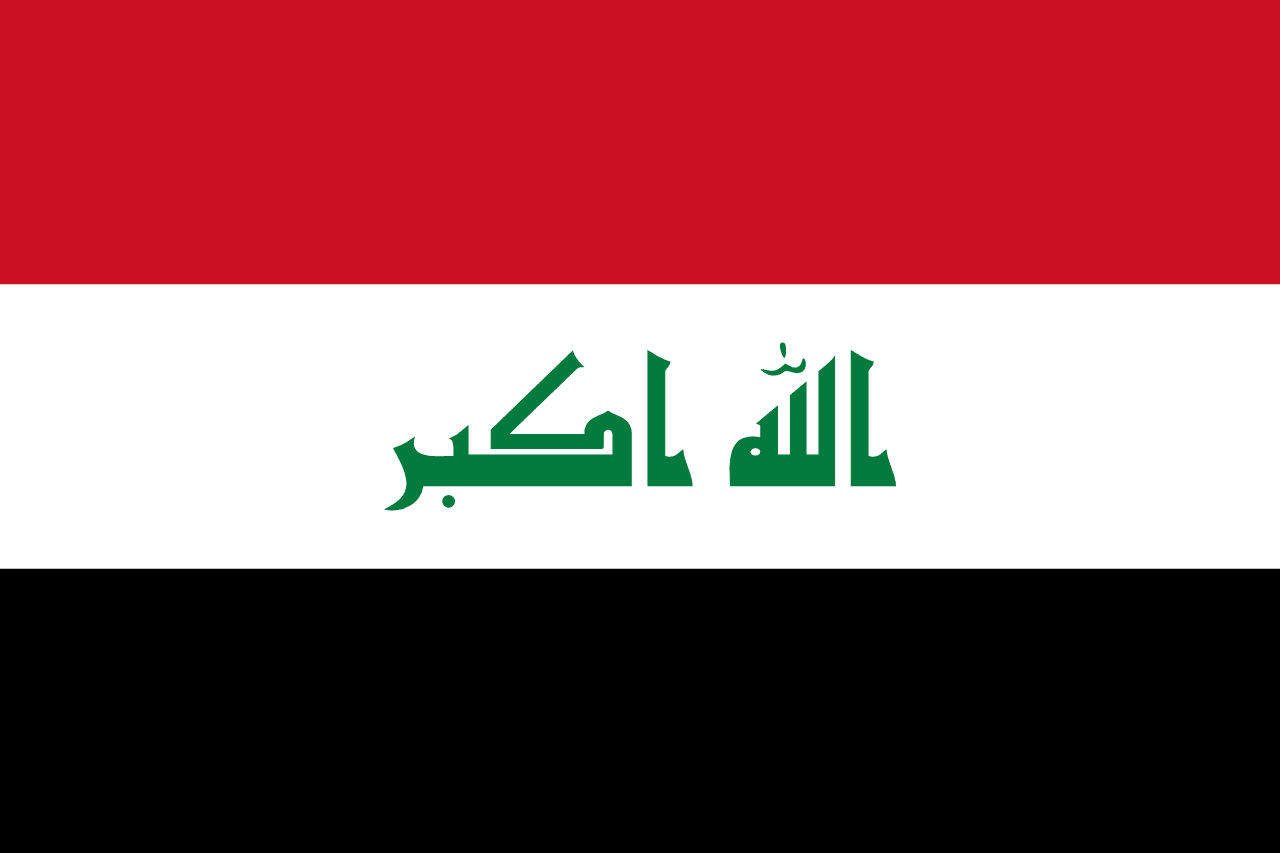The flag of Iran features three horizontal stripes of green, white, and red, with the national emblem centered on the white stripe. The emblem consists of four crescents and a sword, forming a stylized representation of the word "Allah" and the Islamic phrase "There is no god but Allah".
Iran information
| National Flag Day | — |
| Sovereign state | Yes |
| Official name | Islamic Republic of Iran |
| Capital | Tehran |
| Population | 83,783,000 |
| Area | 1,648,195 km² |
| Currency | Rial (IRR) |
| Language | Persian |
| Continent | Asia |
| Region | Middle East |
| Subregion | Southwest Asia |
| Borders | Afghanistan, Armenia, Azerbaijan, Iraq, Pakistan, Turkey, Turkmenistan |
| Timezone | Iran Standard Time (IRST) UTC+3:30 |
| Calling code | +98 |
| Top-level domain | .ir |
History of the Iranian flag
 The current Iranian flag was adopted on July 29, 1980, following the Islamic Revolution of 1979. It replaced the previous flag of the Imperial State of Iran, which had featured a lion and sun emblem. The new design reflects the country's transition to an Islamic republic and incorporates elements of religious symbolism and national identity.
The current Iranian flag was adopted on July 29, 1980, following the Islamic Revolution of 1979. It replaced the previous flag of the Imperial State of Iran, which had featured a lion and sun emblem. The new design reflects the country's transition to an Islamic republic and incorporates elements of religious symbolism and national identity.
Symbolism and design of the Iranian flag
Each element of the Iranian flag carries deep significance. The green stripe represents Islam, growth, and happiness. The white stripe symbolizes peace and honesty. The red stripe stands for courage, martyrdom, and love. The national emblem in the center is a stylized representation of the word "Allah" and the phrase "There is no god but Allah". The emblem's shape resembles a tulip, a symbol of martyrdom in イランian culture. Along the inner edges of the green and red stripes, the phrase "Allahu Akbar" (God is the Greatest) is written 22 times, representing the date of the Islamic Revolution in the イ朗ian calendar (22 Bahman).
Usage and significance of the Iranian flag
 The Iranian flag serves as a powerful symbol of national identity, religious devotion, and political ideology. It is prominently displayed during official ceremonies, religious festivals, and national holidays. The flag plays a crucial role in uniting Iran's diverse population and reinforcing the country's Islamic values and revolutionary principles.
The Iranian flag serves as a powerful symbol of national identity, religious devotion, and political ideology. It is prominently displayed during official ceremonies, religious festivals, and national holidays. The flag plays a crucial role in uniting Iran's diverse population and reinforcing the country's Islamic values and revolutionary principles.
Interesting facts about the Iranian flag
- The colors of the Iranian flag have been used in various combinations since the 18th century, reflecting different periods of Iranian history.
- The current flag design was chosen through a nationwide referendum, with Iranians voting on several proposed designs.
- The tulip-shaped emblem is known as the "Allah Symbol" and was designed by Hamid Nadimi, an イ朗ian artist and architect.
- The flag's reverse side is a mirror image of the front, ensuring that the emblem and text are always correctly oriented when viewed from either side.
- Iran has a rich vexillological history, with various flags representing different dynasties and political eras throughout its long history.





